The mass spectrometry laboratory is equipped with a Thermo Neptune MC-ICPMS, a Thermo X-Series II Quadrupole-ICPMS and an Agilent 8900 Triple Quadrupole-ICPMS for carrying out high precision isotopic ratio and elemental concentration measurements in a wide range of geological materials.
Thermo Neptune MC-ICPMS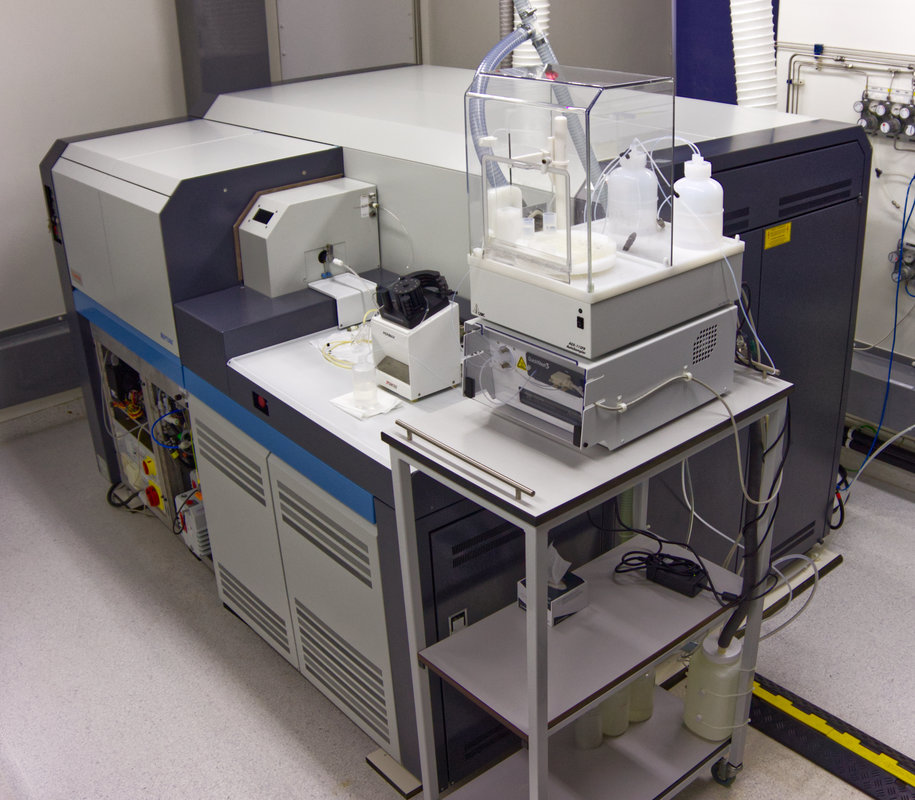
| The samples are introduced into the MC-ICPMS either in solution form using a regular quartz spray chamber or a Cetac Aridus III desolvating nebulizer system, or by ablation using a Resonetics 193 nm ArF excimer laser. The instrument is equipped with nine faraday cups and six channeltron counters that we use to conduct routine measurements of the isotopes of Rb-Sr, Sm-Nd, Lu-Hf, U-Pb systems, and Pu. |
Thermo X-Series II Q-ICPMS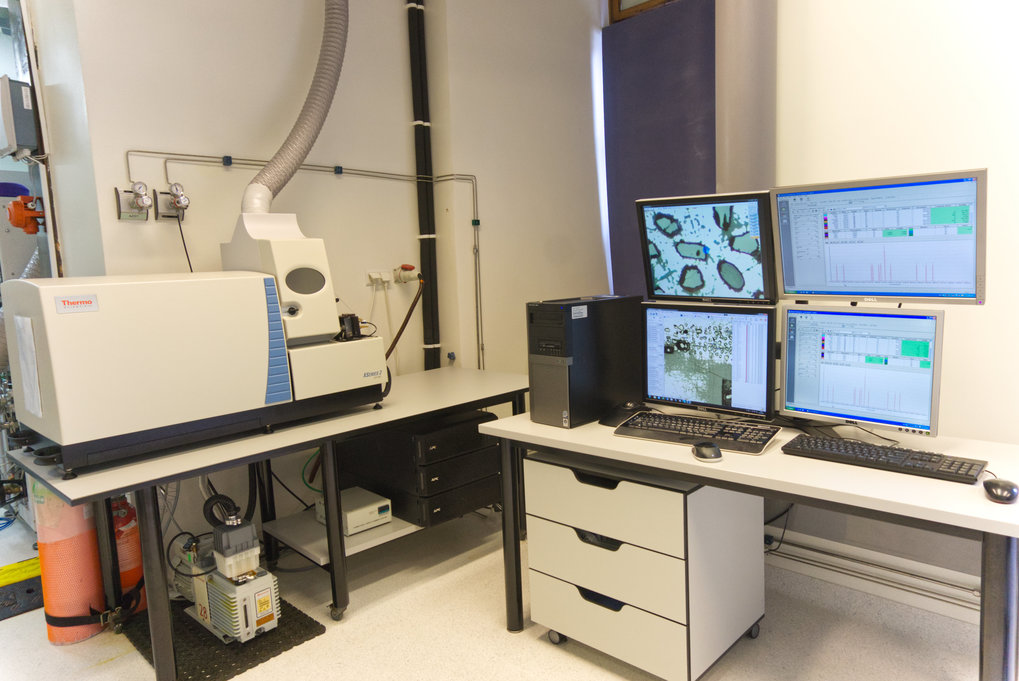 | The Thermo X-Series II Quadrupole-ICPMS coupled with 193 nm excimer laser is primarily used for U-Pb zircon geochronology and for measuring the rare earth element (REE) abundances in various geological and archaeological materials. |
Resonetics RESOlution M-50 193 nm ArF excimer laser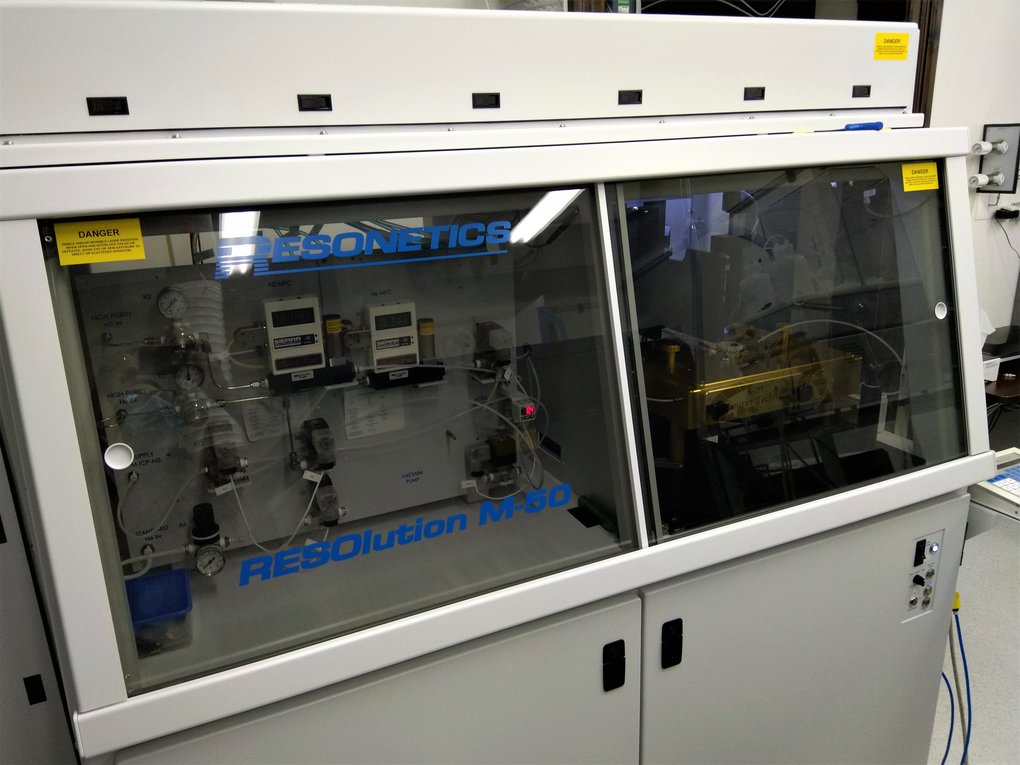
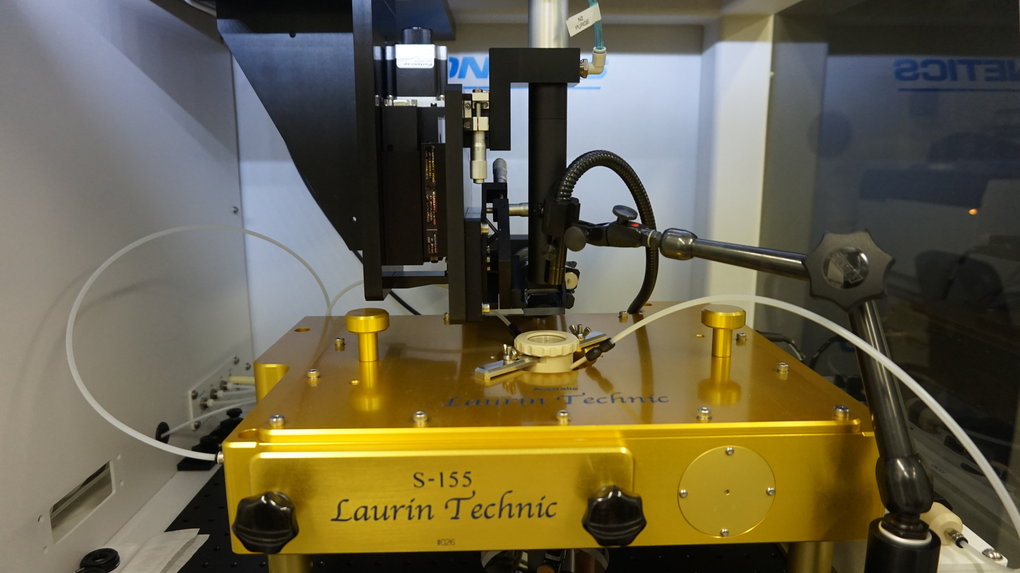
| The Resonetics RESOlution M-50 193 nm ArF excimer laser provides flexible parameters for sample ablation. The laser has a pulse repeatability up to 100 Hz, fluence from 2 to 30 J / cm2 and can operate with spot sizes ranging from 5 to 380 µm. The Laurin Technic S-155 laser ablation cell provides flexibility in mounting the samples, uniform high sensitive signal, efficient signal transport to the ICP and fast washout times. |
Agilent 8900 QQQ-ICPMS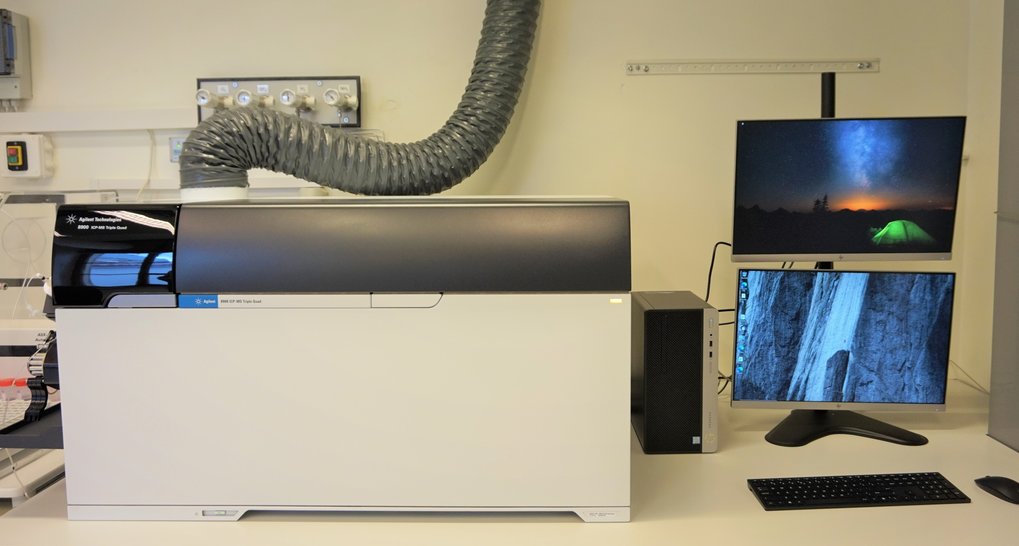
| The latest addition to the lab, Agilent 8900 Triple Quadrupole-ICPMS, allows the measurement of masses that were not resolvable in traditional Q-ICPMS. This is achieved by using gases like He, O2, NH3, and SF6 in a collision / reaction cell between the quadrupoles to remove the isobaric interferences. Four-channel cell gas control provides flexibility in operation, whereas high sensitivity and low background provide lowest detection limit for ultra-trace analytes. |

